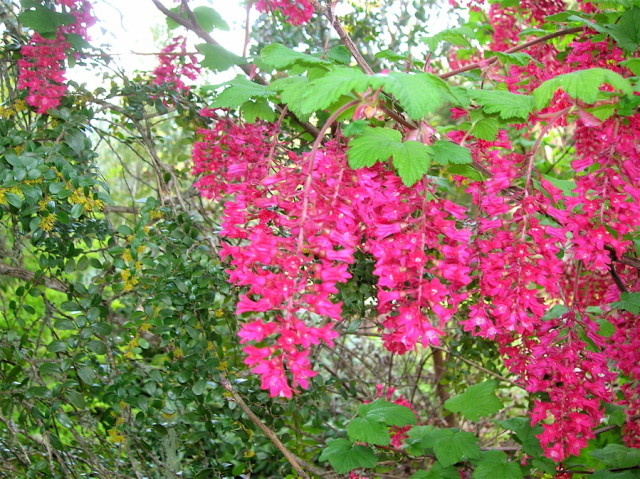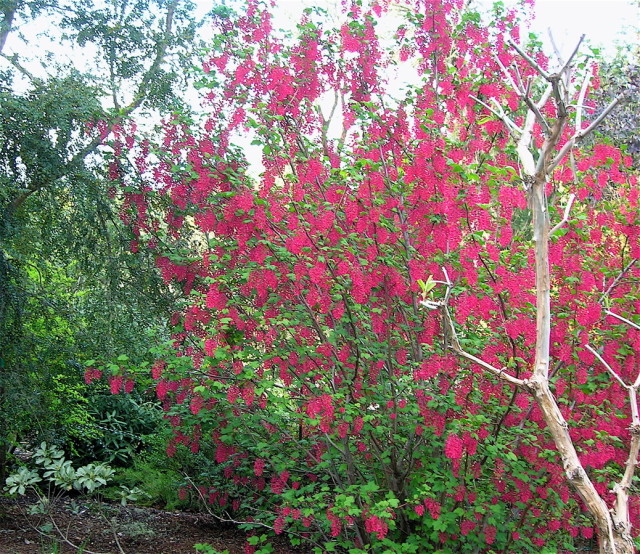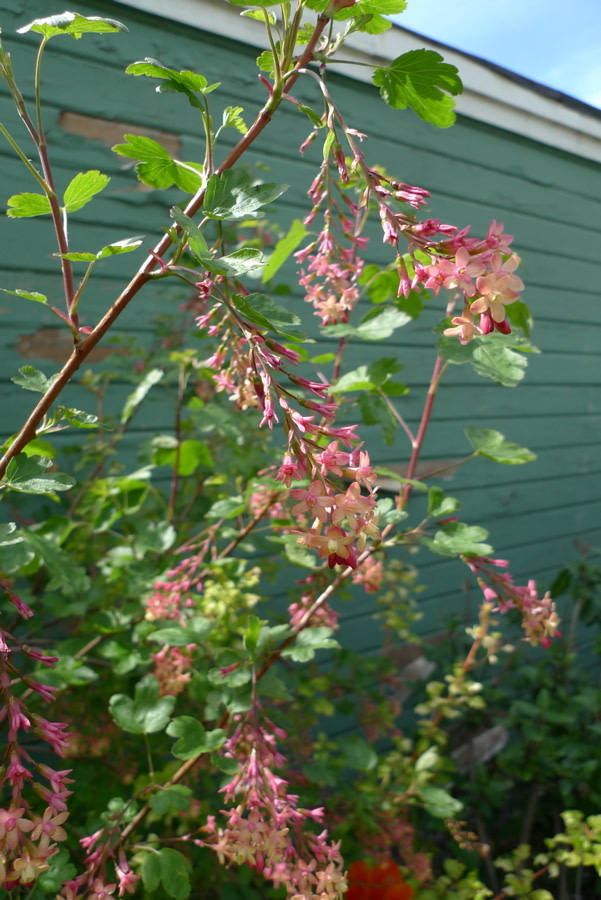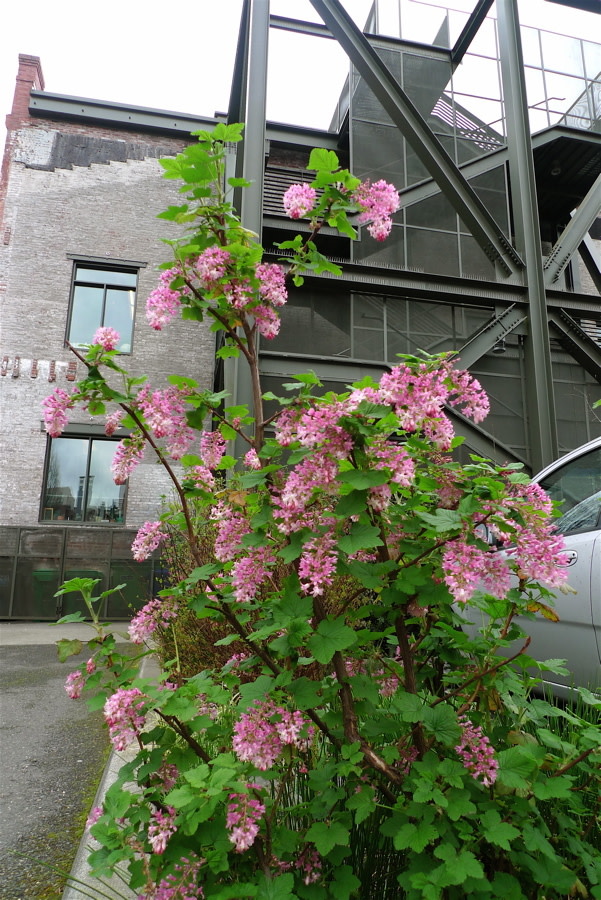Red Flowering Currant

The classic red-flowering currant – enough to drive any hummingbird mad with nectar-lust!
Who doesn’t love the sight of the iconic red-flowering currant in bloom in forest clearings throughout the Pacific Northwest in early spring? It’s a wonderful sight to behold in March on low-elevation hikes… and in April or sometimes later at slightly higher elevations.
You can find flowering currant west of the Cascades from central British Columbia down to central California, growing in forest margins and clearings.

A red currant bush can probably be spotted from space, they’re so bright.
It’s a big, lusty shrub, with pretty leaves that look like small, crinkled maple leaves. The foliage has a delicious scent that I adore but not everyone agrees with me: some characterize it as a cat spray smell. To me it’s resinous, woodsy, and utterly captivating, especially when the sun is beating down on it and volatilizing the resins. Mine is planted close to my garden lounge area.
Of course, it’s the flowers that draw the most attention. They are small, and tubular, and arranged in big, fat, drooping clusters. A healthy plant grown in full sun is like a beacon to hummingbirds: they flock to red-flowering currant in droves. Note: if you prefer the pink or the white forms, no worries – the hummers are just as intoxicated by these paler delights as by the flaming, cerise-red.

Ribes x gordonianum – a hybrid between R. sanguineum and R. odoratum. The golden currant lends the soft yellow-apricot color to the blossoms. The colors are a dream to work with – so soft and complimentary to spring-flowering bulbs…
Here’s what you need to know to grow it:
Flowering Currant (Ribes sanguineum )
Size: 6-10 feet tall x about 6-8 feet wide
Habit: Bushy and rounded in full sun; open and rangy in shade.
Flower color: From a cerise pinkish-red to pale pink to white.
Foliage: Approximately one-inch long leaves are shaped like small, crinkly maple leaves.
Culture: Flowering currant is a forest margin plant so dappled light is just fine. It also thrives in full sun. It is unfussy about soil, except that it should drain properly. In addition, the plant is amazingly tolerant of dry soil and well adapted to our summer-dry climate.

A pretty pink form of flowering currant at the Ecotrust Building downtown. Quite a few of them adorn that space – go visit them soon, while they’re in flower!
Flowering currant is gorgeous and that’s the best reason to grow it. But its flowers also attract hummingbirds, bees, and some butterflies. The foliage has a yummy scent. The small, powder blue-black berries are eaten by a range of birds, as well as other wildlife. And once established – it thrives without summer water except in the dryest, hottest spots. (That’s what Ceanothus are for!) So it’s a great plant for the margins of your property, where the hose won’t reach easily, or where you might cluster drought-tolerant plants like Ceanothus , manzanita (Arctostaphylos ), yuccas and such.
Cultivars:
Elk River Red: red
King Edward VII: red
Pulborough Scarlet: red
Gibson Woods: red, upright form
Pokey’s Pink: pink shading to white
Claremont: huge pink flowers, from subspecies glutinosum
Hannamans’s White: white
White Icicle: white
Brocklebankii: pink flowers, golden yellow foliage, to about 6’ tall (slow)
Variegata: pink flowers, white marbled foliage, to about 6+’ tall (also slow)
Local Sources: Gossler Farms, Forest Farm, Cistus Design Nursery, Dancing Oaks Nursery, Greer Gardens, Far Reaches Farm (WA)
